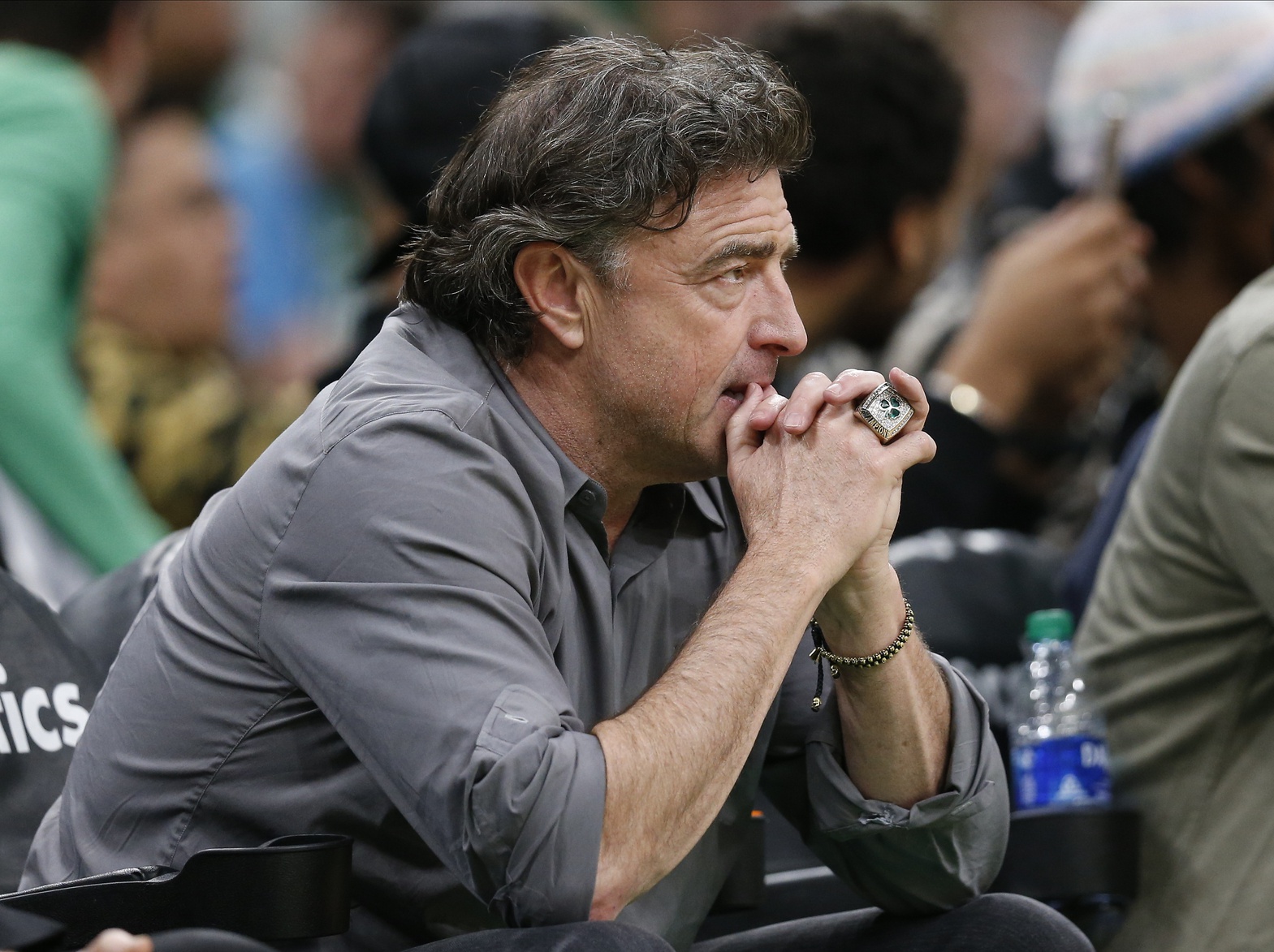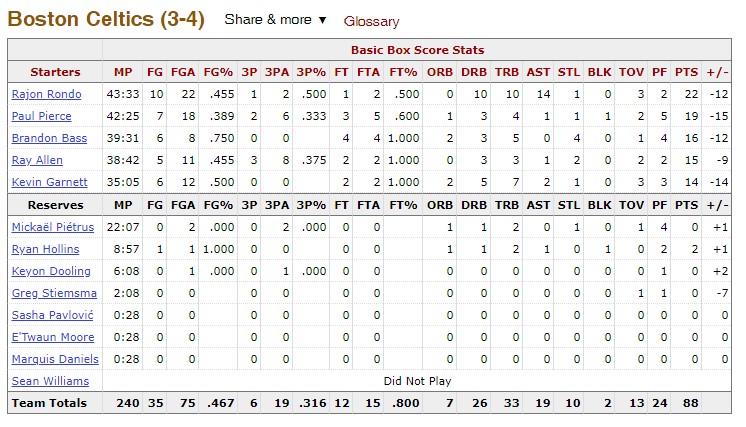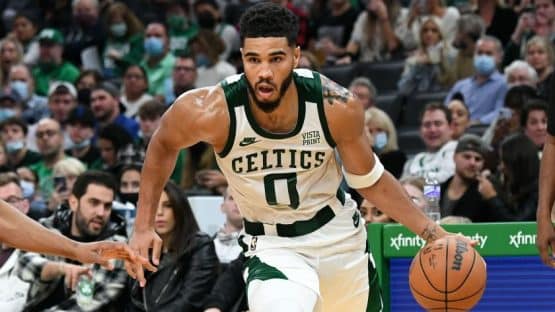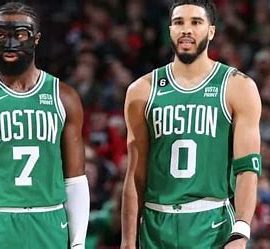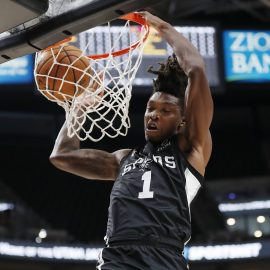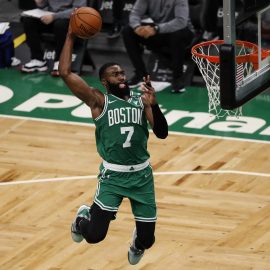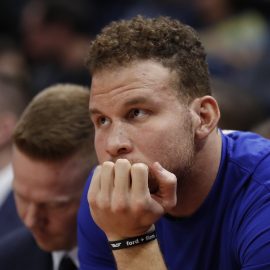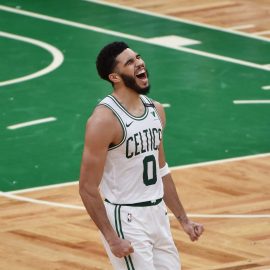Every morning, we compile the links of the day and dump them here… highlighting the big story line. Because there’s nothing quite as satisfying as a good morning dump.
1. Last week, the NBA conducted virtual combine interviews with prospects, and many of those prospects spoke to the media as well.
The press conferences were amusing. All conducted via Zoom, reporters came and went, and the turnover showed — players were often asked the same question multiple times. A popular format from local reporters became tacking a basketball question onto a query about their specific team (one of mine was: “Two questions: How does versatility play a role in your game, and have you talked to the Celtics?”).
The most relevant combo-answer came from Desmond Bane, TCU’s sharpshooting combo guard and the only player who said he spoke to Boston’s decision makers.
“I believe they were my first interview,” Bane said. “I think I was the interview for 15 of the teams that I interviewed with and second for a good majority of the other ones. There was a lot of interest early on, and the Celtics were one of those teams.
Well, if the C’s draft Desmond Blane, it’s clear that their strategy remains ‘best available’, as Boston doesn’t appear to have a pressing need in the guard position.
The Celtics also reportedly talked to Xavier Tillman, a rock solid big man from Michigan State. Tillman isn’t an explosive athlete, but he’s a strong, high-IQ big man with some pick-and-pop potential. Adding Tillman might mean moving on from one of the other young bigs in a crowded (but inexperienced) rotation.
Tillman sounds like an upgrade from Enes Kanter, but the same basic player. I tend to think that Ainge views the center position as primarily defensive–he’s had plenty of opportunities to chase Andre Drummond, for instance, and has apparently shown zero interest. Thus, I’m a bit skeptical about the team adding a center whose upside is primarily offensive.
Of course, this draft class is so goofy, this draft is going to be so goofy, you should take everything I write here with a grain of salt the size of the Pru.
5. Boston reportedly had a good virtual meeting with Stanford’s Tyrell Terry as well. Terry is polarizing — some evaluators see him as high-lottery talent, but most mock drafts have him tumbling into the 20s. A deadly shooter off the dribble, Terry is primarily a point guard. With his shot, passing and handle, he could warp defenses in intriguing ways.
It’s a polarizing guard named Terry—and an involuntary shudder just went through me.
Honestly, of all the guys that Westerholm profiled, this guy sounds like the most ‘Boston’ pick profiled. A guy about whom there is no consensus, and who might be considerably better than his draft position.
Meanwhile over at NBC Sports, the network held another mock draft, and the C’s first round picks were:
#14 – Aaron Nesmith: Seeing how close they were to landing Tyler Herro a year ago, Nesmith gives Boston a much-needed shot-maker whose presence should help loosen up the offense for Boston. If not for an injury that sidelined him most of this past college basketball season, Nesmith was likely going to be a top-five or top-10 pick.
#26 – Isaiah Stewart: The goal at this point is to draft-and-stash, but there’s a sense that passing on Stewart to select an international prospect may come back and haunt Boston akin to when the Celtics bypassed Jimmy Butler in 2011 for JaJuan Johnson.
#30 – Leando Bolmaro: This will be a draft-and-stash pick for Boston. In Bolmaro, Boston gets a player who is at his best finishing at the rim off dribble-drive attacks to the paint. And at 6-7, he gives Boston a solid rebounder from the wing position who can initiate the offense on his own which puts the Celtics on the attack against an opposing defense that doesn’t get a chance to get set up or organized.
The fun thing about mock drafts is that nobody remembers them. I mean, you can throw out any bit of craziness that you can cook up and it’s not going to come back to haunt you.
But, looking at the C’s picks, I’m pretty sure they’re going to keep #14, but I also think they’ll look to consolidate #26 & #30 into a single pick in a later year. The C’s have enough picks to start a farm system, if only the NBA permitted such a thing.
Boston can also improve by trading players:
It’s harder to see paths to bigger moves. Celtics fans, frustrated by Hayward’s injury woes, will clamor for the team to ponder trade possibilities after he triggers a $34.2 million player option in the final year of his contract. Alas, dealing that sort of salary, particularly with Hayward’s recent injury history, would be difficult to recoup value. The better path might simply be to hope he can stay healthy and get back to being the sort of impact player we saw in spurts before injuries set him back each time.
Moving Hayward is a popular suggestion, which basically means that it’s a bad idea. I mean, seriously, few groups of people are wrong as often as are loud and obnoxious sports fans.
Hayward, to be sure, has appeared to be snake-bit, but he played 72 games in the 2019 season. We just forgot about that because the team was a mess. Trading guys that appear injury-prone just to get rid of their contracts is a stupid maneuver, and I doubt that Ainge is going to pursue it. And I doubt that very many teams will be calling Ainge up to ask about Hayward’s availability.
Bench shooting will almost certainly be a priority for Ainge this offseason as the Celtics, set to bring back much of their core, will look to improve on the margins. Finding a veteran like Iguodala, who was a negative for the first five games of the East finals, then gave the Heat 15 points on 5-of-5 shooting and was plus-20 in Game 6, could also help a Celtics team overflowing with youth — even if it’s just a veteran voice to steady them.
Ah……. Bench scoring——
I hate to do this.
I really, really, really hate to do this.
But I’m going to do this.
I’m going to go back to game 7 of the 2012 ECF.
Everybody remembers LeBron going off in game 6, but here’s what doomed the Celtics in game 7:
They got two points from their bench.
Now the reason why I’m bringing this up is because the Celtics had lost Avery Bradley to injury during the regular season, while Jeff Green didn’t play a minute of that season due to discovery of a life-threatening heart condition.
Of all sad words of tongue or pen, the saddest are these, ‘It might have been.
My point in bringing up that particularly painful bit of Boston history is that a healthy Boston team could have, and arguably should have been in the Finals in 2012, where they would face a poorly coached Thunder squad that looked lifeless against the Heat.
That they weren’t is not so much about poor roster construction as it is about bad breaks.
So, when looking at the C’s roster at the close of the 2020 season, it’s fair to ask if a healthy C’s team would have advanced to the Finals. And if not, are the shortcomings ones of experience or ones that require replacing players? Is the lack of bench scoring primarily due to injuries that forced Smart into the starting lineup and knocked Langford out of the playoff rotation completely and limited his development during the regular season? Or are their more fundamental concerns?
Honestly, I don’t know the answer to that. I know that Langford should develop into a solid two-way player and that Smart has a proven ability to contribute offense from the sixth man spot. I don’t know how much more scoring Boston needs from the top of its bench.
Add The Sports Daily to your Google News Feed!
